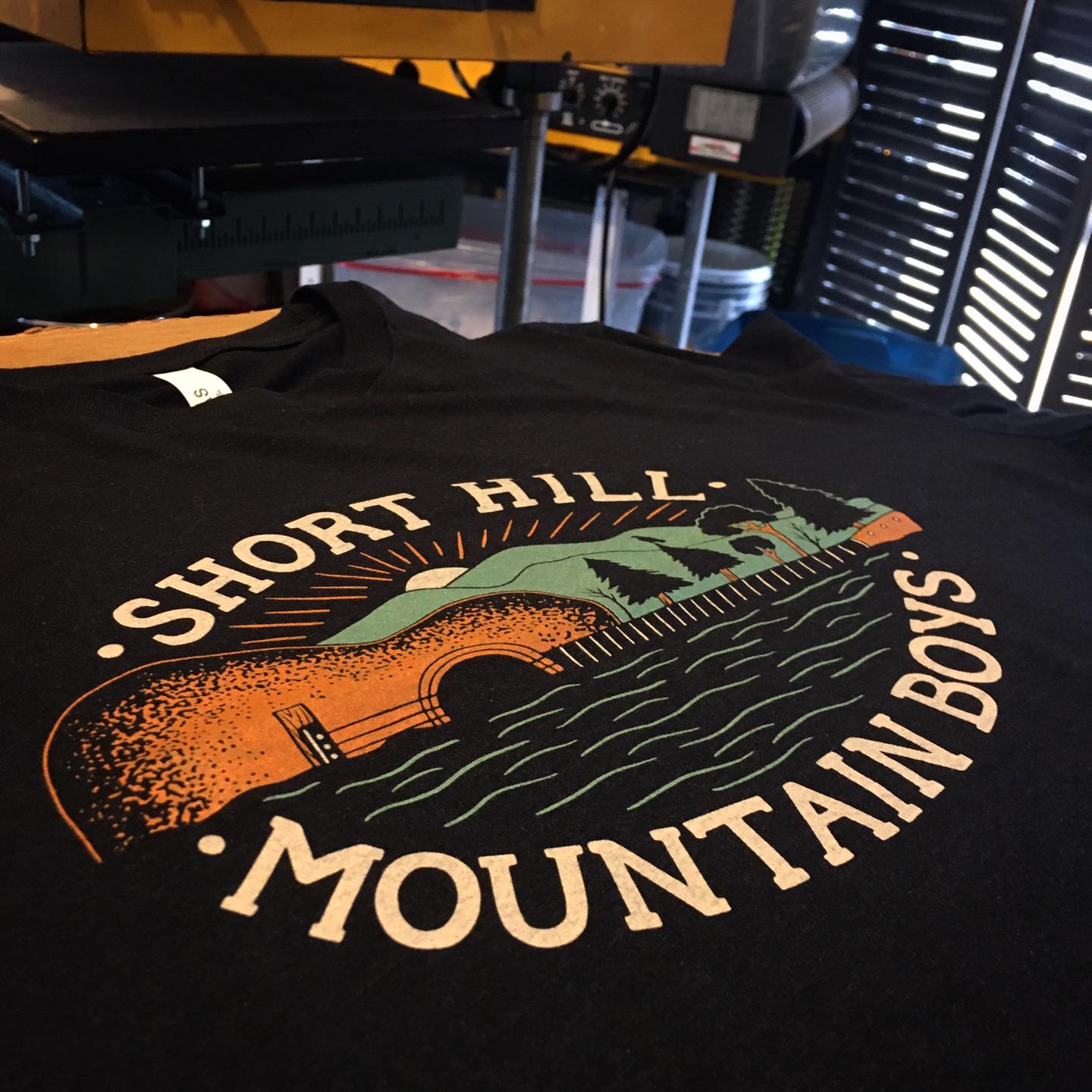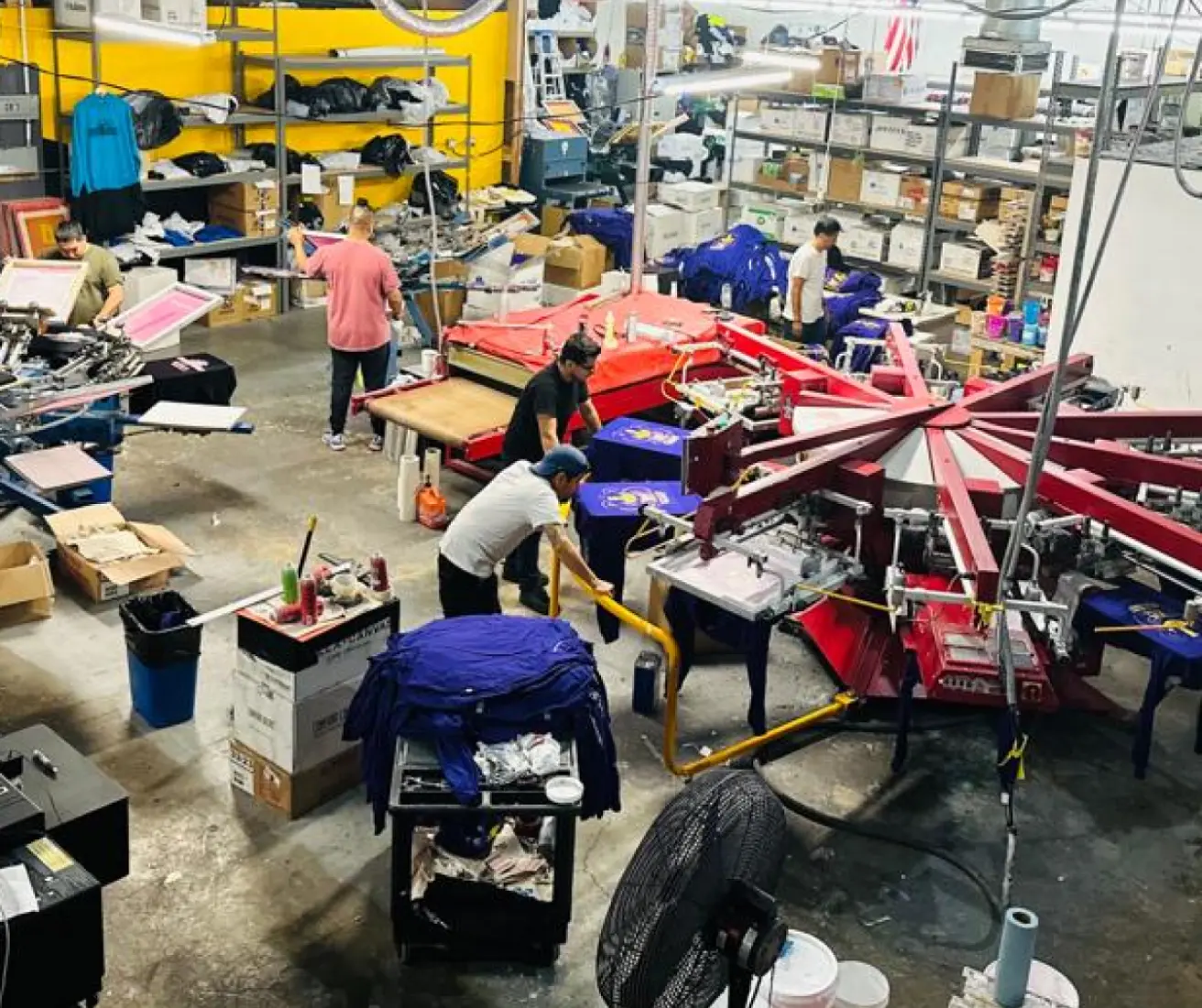Affordable Custom Screen Printing Services for Small Businesses
Screen Printing Uncovered: Everything You Required to Understand About Tee Shirt and Garment Printing Methods
If you've ever questioned exactly how those vivid layouts end up on your preferred tees, you're in the right place. Screen printing is a remarkable approach that combines art with strategy, using limitless opportunities for imagination. Comprehending the basics, from devices to ink selections, can considerably affect your outcomes. Ready to explore the important elements that make display publishing an art type? Let's reveal the details that can raise your projects.
The Essentials of Display Printing: Exactly How It Works
When you dive into display printing, you'll discover it's both a scientific research and an art. At its core, screen printing includes creating a pattern, or screen, that permits ink to travel through just in specific locations (screen printing kit). You begin by picking your design and preparing your display with a light-sensitive solution. Once you expose this emulsion to light, it sets, leaving your style as an adverse area.
Setting the display over the material, then make use of a squeegee to push ink via the display onto the garment. Each step is crucial, and grasping them will certainly boost your screen printing abilities, changing easy garments into special, expressive pieces.
Kinds Of Display Printing Methods
Once you grasp the basics of screen printing, it's time to explore the various methods that can raise your styles. One preferred approach is typical display printing, where ink is pressed through a stenciled screen. This technique is excellent for vibrant, vivid colors. After that there's water-based ink printing, which provides a softer feel and is environment-friendly, however it needs a various method to treating.
One more option is plastisol printing, understood for its sturdiness and dazzling colors, making it a preferred for lots of brands. Experiment with halftone printing to produce slope impacts and complex styles.
Essential Devices for Screen Printing
To achieve stunning lead to display printing, having the best tools is basic. You'll need a durable screen printing structure, which holds the mesh that moves your design onto the garment. Next, purchase top notch mops; these are vital for using ink equally across the screen. You'll also require a good direct exposure device to create your displays, in addition to a washout cubicle for cleansing them after usage. A trusted warm source, like a conveyor clothes dryer or warm press, is crucial for healing your prints to guarantee durability. Don't fail to remember an appropriate workspace, furnished with tables and storage space for your products. Ultimately, safety gear, such as masks and gloves, will keep you secure from chemicals and inks. With the right devices, you'll be well on your means to generating professional-quality prints.
Selecting the Right Inks and Materials
When choosing inks and products for screen printing, you need to consider the sort of ink that functions best for your job. Think about textile compatibility to ensure your designs look last and excellent lengthy. Additionally, discover environmentally friendly ink options to make your printing procedure a lot more lasting.
Sorts Of Screen Inks
Selecting the appropriate screen ink is necessary for achieving dynamic, durable prints that fulfill your task's demands. There are several types of screen inks to examine. Specialized inks, such as glow-in-the-dark or metal, can add one-of-a-kind effects to your designs.

Textile Compatibility Factors To Consider
Recognizing material compatibility is essential for accomplishing premium display prints, especially considering that different materials respond distinctly to numerous inks. Always test your inks on sample material to assure they stick properly and preserve shade stability. Furthermore, maintain in mind that textile weight and texture can impact the final end result, so picking the appropriate ink and product combination is crucial for your task's success.
Eco-Friendly Ink Options
Eco-friendly inks are ending up being a preferred selection for display printers that desire to reduce their ecological impact while maintaining high quality. When choosing inks, consider water-based inks, which are much less hazardous and much easier to clean up compared to standard solvents.
In addition, look for inks made from renewable resources, such as soy or vegetable-based options. By selecting the appropriate inks and products, you'll not just create spectacular designs however likewise add to an extra lasting printing procedure. Make the switch, and your prints will certainly reflect your commitment to the environment!
Preparing Your Style for Screen Printing

Submit Format Requirements
To ensure your style looks dynamic and sharp on material, you'll require to pay close interest to file style requirements for screen printing. Begin with vector documents like AI or EPS, as they can be scaled without losing top quality. If you make use of raster images, select high-resolution files, such as TIFF or PNG, ideally at 300 DPI. Stay clear of using JPEGs, as they can shed clarity when resized. Also, make sure your design has a transparent background to avoid unwanted white sides on your prints. Lastly, keep color modes in mind; CMYK is standard for display printing, so convert your RGB designs as necessary. By adhering to these guidelines, you'll set your art work up for an effective print.
Shade Separation Methods
Color separation is an important action in preparing your design for screen printing, and understanding it can greatly boost your print high quality. You'll require to break your style into specific colors, as each color requires a different screen during printing. Start by identifying all the shades in custom screen printing your layout and produce layers for each one. You can make use of software like Adobe Photoshop or Illustrator to separate and separate colors properly. Be particular to save each layer as a different data, usually in a format like TIFF or PSD. This accuracy not just ensures accurate shade representation but also streamlines the printing procedure. By taking note of shade separation, you'll attain professional and vivid cause your screen-printed garments.
Resolution and Size
Accomplishing the best outcomes in display printing starts with ensuring your design has the best resolution and size. Preferably, your art work should be at the very least 300 DPI (dots per inch) for sharp, clear prints. Your last product may look unprofessional and pixelated. if you utilize reduced resolution.
When it concerns size, consider the measurements of your print area. Style your artwork to match the last print dimension, preferably creating it in the actual dimensions you'll be printing. In this manner, you'll avoid any unanticipated scaling issues.
Always inspect your style in both vector and raster formats. Vector graphics can be scaled without losing quality, making them optimal for screen printing. Preparing correctly will assure your layout looks remarkable on every garment!
Step-by-Step Screen Printing Process
Screen printing is a dynamic procedure that permits you to create dynamic designs on various surface areas. To begin, you'll require a display, emulsion, and your picked ink. Prepare your screen by cleaning it thoroughly. Next, use the solution evenly and let it completely dry in a dark area. Once completely dry, reveal your screen to light with your design positioned on it, which will certainly set the emulsion where the light hits, developing a stencil - screen printing kit.
Pour ink onto the screen and utilize a squeegee to press the ink via the stencil onto the fabric. Raise the display very carefully and let the print completely dry. You have actually efficiently display printed your design.
Tips for Effective Screen Printing Projects
While you're diving right into your display printing jobs, keep in mind that preparation is key to success. Begin by gathering all your products-- inks, displays, garments, and squeegees. A clean workspace aids avoid undesirable mistakes, so clean up prior to you start.
Next, confirm your art work is high-resolution and effectively sized for your garment. Check your display for proper exposure and tidy it thoroughly to stay clear of smudges. When mixing your inks, adhere to the manufacturer's standards to achieve the right uniformity.
During printing, apply even stress with your squeegee for regular results. Do not hurry; take your time to verify each print satisfies your criteria. After printing, let your garments completely dry entirely prior to dealing with or packaging them.
Last but not least, always maintain an example of your work for future reference. This method, you can evaluate your progress and enhance your strategies over time. Pleased printing!

Frequently Asked Concerns
How Lengthy Does It Take to Establish up a Screen Printing Work?
Setting up a screen printing job typically takes about thirty minutes to an hour. You'll prepare the displays, mix inks, and readjust the press. The time varies based upon complexity and experience, so stay arranged!
Can I Print on Various Material Enters Utilizing the Exact Same Method?
Yes, you can publish on various fabric kinds utilizing the same strategy, yet you'll require to readjust your settings and inks. Some textiles take in ink in a different way, so trying out warranties the very best results for each and every material.
What Are Usual Mistakes to Stay Clear Of in Screen Printing?
When display printing, prevent common errors like utilizing the incorrect ink, ignoring proper direct exposure times, or skipping pre-press checks. Constantly evaluate your configuration and keep clean displays to assure top quality results each time.
Just How Can I Correctly Tidy and Maintain My Display Printing Equipment?
To appropriately clean and preserve your display printing equipment, you need to regularly clean screens with suitable solvents, check squeegees for wear, and guarantee all tools are kept dust-free and completely dry. Consistency enhances and avoids costly fixings performance.
Is Screen Printing Environmentally Pleasant Contrasted to Other Techniques?
Screen printing can be a lot more eco-friendly than other techniques, especially if you use eco-conscious products and water-based inks. By picking sustainable supplies and methods, you minimize waste and minimize your effect on the world.
Display Printing Uncovered: Every Little Thing You Need to Know About Tee Shirt and Garment Printing Strategies
At its core, display printing involves creating a stencil, or screen, that permits ink to pass through only in details locations. Position the display over the textile, then utilize a squeegee to push ink with the screen onto the garment. One prominent technique is traditional screen printing, where ink is pushed through a stenciled screen.When selecting inks and materials for screen printing, you require to take into account the kind of ink that functions ideal for your task.